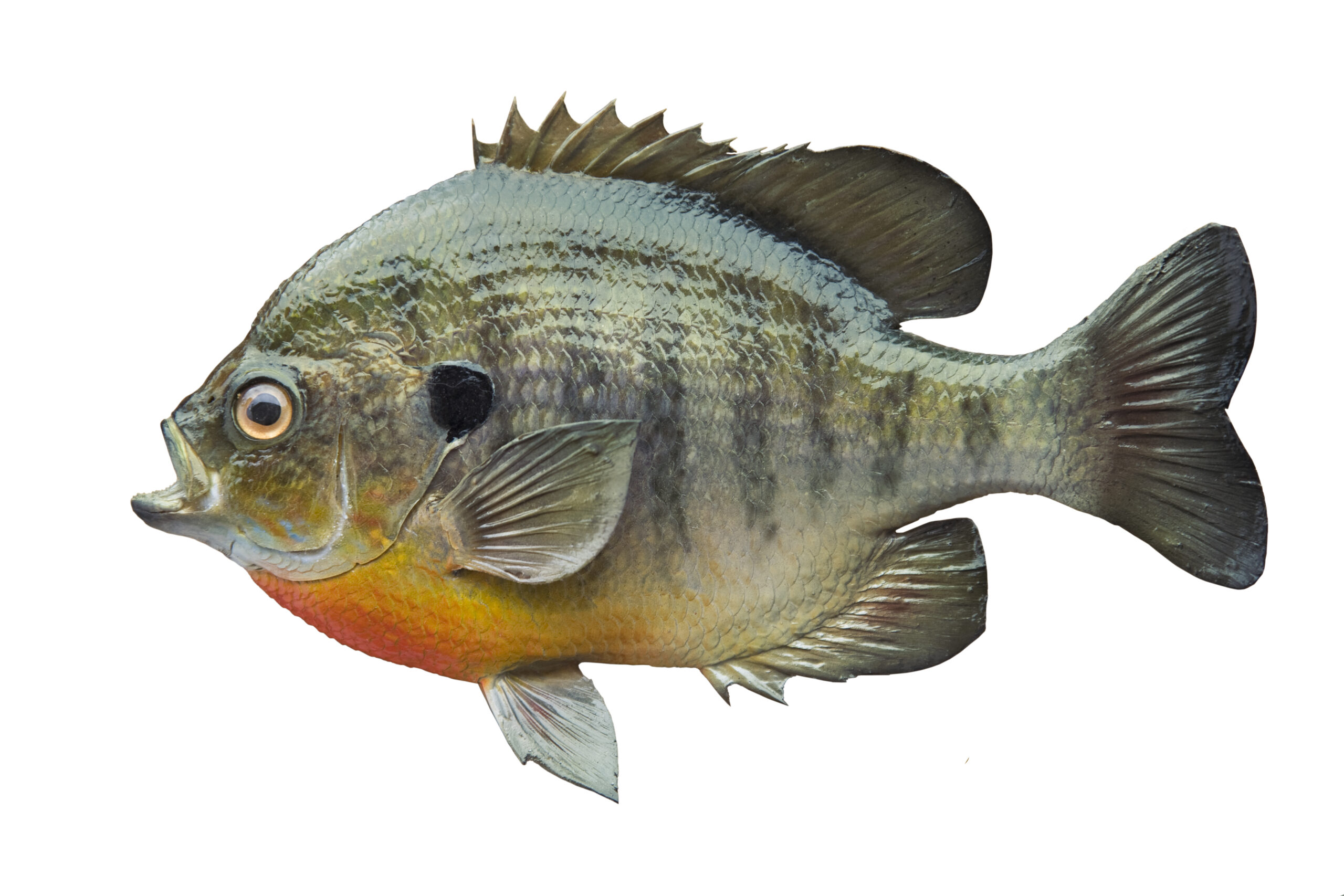Other common names:
Sunfish, sunfish, yellow sunfish
Scientific name :
Lepomis gibbosus
English common name:
Pumpkinseed

Identification
Body Shape: Stocky body, laterally compressed, almost circular.
Average size: 10 to 15 cm, up to 22 cm.
Coloring: Brilliant, very characteristic coloring pattern. Golden brown to olive back; golden sides; belly bronze to orange red; indistinct dark vertical stripes on the flanks (more apparent in juveniles and females); olive, orange or red speckles and blue or emerald reflections on the sides; bright blue wavy lines on cheeks and operculum (more evident in males); large black spot with small orange or scarlet crescent at the end of the operculum.
Characteristic external features: Several small teeth; 2 connected dorsal fins giving the impression of a single (front fin with 10 or 11 spines and rear fin with soft rays); moderately tall pectoral fins on the body; pelvic fins in a thoracic position almost under the pectoral fins; anal fin with 3 sharp spines; moderately forked caudal fin.
Habitat
Hot water (18 to 24oC), shallow and clear with dense vegetation and varied background. Small lakes, ponds, bays of larger lakes, slow-flowing streams.
Food
Pumpkinseed mainly feeds on aquatic insects. It also feeds on small fish, small mollusks, zooplankton, salamanders eaten as larvae, worms and slugs. It hunts its prey on the surface, between two waters and near the bottom.
Reproduction
Season: Late spring and summer, June to early August.
Type of spawning ground: Shallow water (15 to 30 cm) with submerged aquatic vegetation and varied bottom (mud, sand, gravel or stones).
Mode: Spawning begins around the age of 2. The male becomes more colorful and very aggressive. It builds a nest (slight depression with a diameter equal to twice the length of the adult) and makes an elaborate courtship to the female. It lays between 1,500 to 3,000 pale amber eggs, 1mm in diameter, which attach to small stones, roots, and twigs at the bottom of the nest. The male protects the eggs and the fry. The outbreak occurs after only 3 days. During the same season, the male can reproduce several times in the same nest with the same female or with different females. Several females can spawn simultaneously in the same nest

